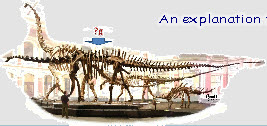


Share this page
Presentation: Can we calculate Palaeogravity?
by
Stephen W. Hurrell
by
Stephen W. Hurrell
Abstract
Palaeogravity, the strength of the Earth’s surface gravity in the past, is widely assumed to have been constant for a vast amount of geological time. I outline a simple scientific method to check if this belief is correct.
Measuring the Earth’s surface gravity today (1g) is a simple scientific procedure. Only two measurements are required: weight and mass. Palaeogravity can therefore be calculated by calculating the weight of a mass that existed in the past. An extinct animal can be used to calculate palaeogravity using the weight-mass method if both its weight and mass are known.
Palaeogravity can be calculated from:
ga = wa / m
where ga is palaeogravity at some predefined age, wa is the weight at that age and m is the mass. Since mass never varies it does not need a subscript to denote its age.
For weight: the weight of extant land-based animals can be compared to the dimensions of their leg bones to derive a formula for weight based on leg bone dimensions. This formula can also be used to calculate the weight of extinct land-based animals. For mass: palaeontologists have produced accurate reconstructions of a large number of extinct animals. These reconstructions allow the mass of land-based animals to be calculated from their body volumes and tissue density.
The weight-mass technique can be used to calculate palaeogravity for a range of time periods based on a number of animals. Coelophysis predicts 0.42g and 0.44g at 210 million years ago (Ma), Megalosaurus: 0.51g at 167 Ma, Giraffatitan: 0.54g at 152 Ma, Acrocanthosaurus: 0.54g at 113 Ma, Gigantoraptor: 0.61g at 80 Ma, Euoplocephalus: 0.65g at 76 Ma, Tyrannosaurus rex: 0.67g, 0.66g, 0.61g, and 0.64g at 67 Ma, Ankylosaurus: 0.69g at 67Ma and Paraceratherium: 0.73g, 0.81g and 0.85g at 29 Ma. These calculations can be examined in more detail at https://dinox.org/pub.
The results indicate that, far from being the constant assumed, the Earth’s surface gravity was substantially less in the past and has slowly increased towards our present day surface gravity.
Measuring the Earth’s surface gravity today (1g) is a simple scientific procedure. Only two measurements are required: weight and mass. Palaeogravity can therefore be calculated by calculating the weight of a mass that existed in the past. An extinct animal can be used to calculate palaeogravity using the weight-mass method if both its weight and mass are known.
Palaeogravity can be calculated from:
ga = wa / m
where ga is palaeogravity at some predefined age, wa is the weight at that age and m is the mass. Since mass never varies it does not need a subscript to denote its age.
For weight: the weight of extant land-based animals can be compared to the dimensions of their leg bones to derive a formula for weight based on leg bone dimensions. This formula can also be used to calculate the weight of extinct land-based animals. For mass: palaeontologists have produced accurate reconstructions of a large number of extinct animals. These reconstructions allow the mass of land-based animals to be calculated from their body volumes and tissue density.
The weight-mass technique can be used to calculate palaeogravity for a range of time periods based on a number of animals. Coelophysis predicts 0.42g and 0.44g at 210 million years ago (Ma), Megalosaurus: 0.51g at 167 Ma, Giraffatitan: 0.54g at 152 Ma, Acrocanthosaurus: 0.54g at 113 Ma, Gigantoraptor: 0.61g at 80 Ma, Euoplocephalus: 0.65g at 76 Ma, Tyrannosaurus rex: 0.67g, 0.66g, 0.61g, and 0.64g at 67 Ma, Ankylosaurus: 0.69g at 67Ma and Paraceratherium: 0.73g, 0.81g and 0.85g at 29 Ma. These calculations can be examined in more detail at https://dinox.org/pub.
The results indicate that, far from being the constant assumed, the Earth’s surface gravity was substantially less in the past and has slowly increased towards our present day surface gravity.
First Published: 16 June 2020
Suggested Citing Format
Hurrell, S.W. (2020). Presentation: Can we calculate palaeogravity? http://dinox.org/hurrell2020a
See also article: Can we calculate palaeogravity?
See also article: Can we calculate palaeogravity?

This presentation was prepared for the Polish Geological Congress due to be held from 16 - 18 June 2020 at Poznań, Poland. Unfortunately, the Coronavirus Pandemic meant the congress did not take place, so I have placed a homemade version here and a YouTube version at: https://youtu.be/qGO16O4PLJs
Page created 02 Oct 2020
Page updated 09 Apr 2024




